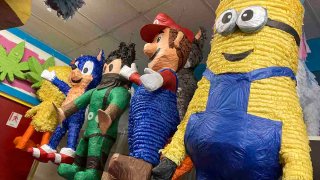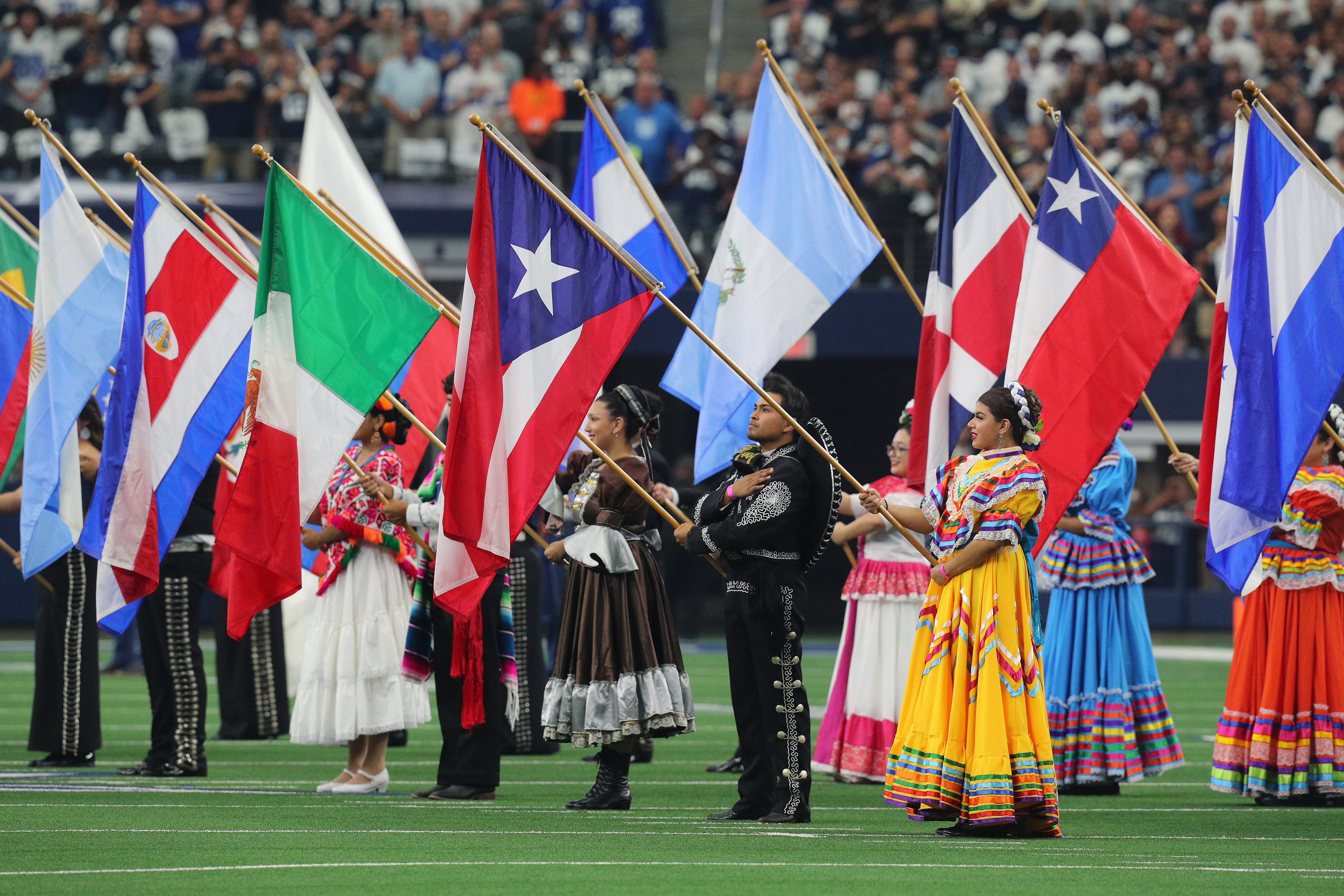
The U.S. Postal Service on Friday rolled out its latest special edition postage stamps, paying homage to a tradition with global roots that has evolved over centuries to become a universal symbol of celebration.
The release of four new stamps featuring colorful piñatas coincides with a monthlong recognition of Hispanic heritage in the U.S. and the start of an annual festival in New Mexico where the handmade party favorites are cracked open hourly and children can learn the art of pasting together their own creations.
Piñatas are synonymous with parties, although their history is layered and can be traced to 16th century trade routes between Latin America and Asia and the efforts of Spanish missionaries to convert Indigenous communities to Christianity. It was through dance, music and the arts — including the making of piñatas — that biblical stories were spread throughout the New World.
Piñatas became a key part of celebrating Las Posadas — the festivities held each December in Mexico and other Latin American countries to mark the birth of Christ. The religious origins are evident in the classic piñata designs of the seven-point star and the burro, or donkey, said Cesáreo Moreno, chief curator at the National Museum of Mexican Art in Chicago.
Get top local stories in Philly delivered to you every morning. Sign up for NBC Philadelphia's News Headlines newsletter.
“Those early missionaries really were creative in the ways in which they wanted to teach the biblical stories to the Indigenous people," Moreno said. "Nativity scenes, piñatas, posadas — all those things really worked well. They worked so well that they became a part of the popular culture of Mexico.”
And they still are part of the Mexican and larger Hispanic communities, whether it's in Chicago, San Antonio or Los Angeles, he said.
“Culture has no borders. Wherever community gathers, they have their culture with them. They bring it with them and so the piñata is no different,” he said.

Piñatas imported from Mexico line parts of Olympic Boulevard in Los Angeles. In Nevada, Arizona and New Mexico, people have turned their kitchen tables and garages into makeshift piñata factories, turning out custom shapes for birthday parties and special events.
Inside Casa de Piñatas in Albuquerque, giant characters hang from the ceiling and crowd the walls. For more than half his life, shop owner Francisco Rodríguez has been bringing to life super heroes, dinosaurs, sea creatures and other animals with strips of old newspaper and a simple paste of flour and water.
Some customers come from El Paso, Texas, and others from as far away as Michigan.
Rodríguez stared out the window, watching traffic zip by as he waited for his work to dry. With residue still on his apron and the fans blowing, he contemplated the future of the industry, hoping the next generation will take an interest in the craft.
He said many older piñata artists have retired or closed up their shops and he’s concerned the materials needed — like newspapers — will be harder to get as more things go digital.
It's likely piñatas will keep evolving as they have over the centuries. No longer are they made from clay ollas — used for hauling water or storing food — that would make a loud pop when cracked. Gone are the shards that would litter the ground as children scrambled for the tangerines, pieces of sugar cane and candy that poured out.
The stamps were inspired by the childhood memories of graphic designer Victor Meléndez, who grew up in Mexico City and remembers spending days with cousins and other relatives making piñatas to celebrate Las Posadas. His mother also would make piñatas for birthdays.
“That’s a dear, dear memory of just fun and happiness,” he told The Associated Press as he took a break from painting a mural in Seattle. “And I wanted to show a little bit of that and pay homage to some of those traditions.”
More: Celebrating Hispanic Heritage
Meléndez's artwork also is influenced by the colors of homes in Mexico — bright pinks and deep blues, yellows and oranges.
Getting chosen by the U.S. Postal Service to design the stamps was certainly a dream project for Meléndez, who is known for his murals and design work for Starbucks. He's been a longtime fan of stamp work, having collected what he described as a ton of little bits of paper just because he likes the art.
Meléndez hopes the new stamps will ignite conversations and encourage people to learn about other cultures. They might discover they have more in common, he said.
“In the end, I feel that there must be a connection and there must be some sort of mutual understanding,” he said. "That eventually leads to better relations and more people being happy without fighting.”



